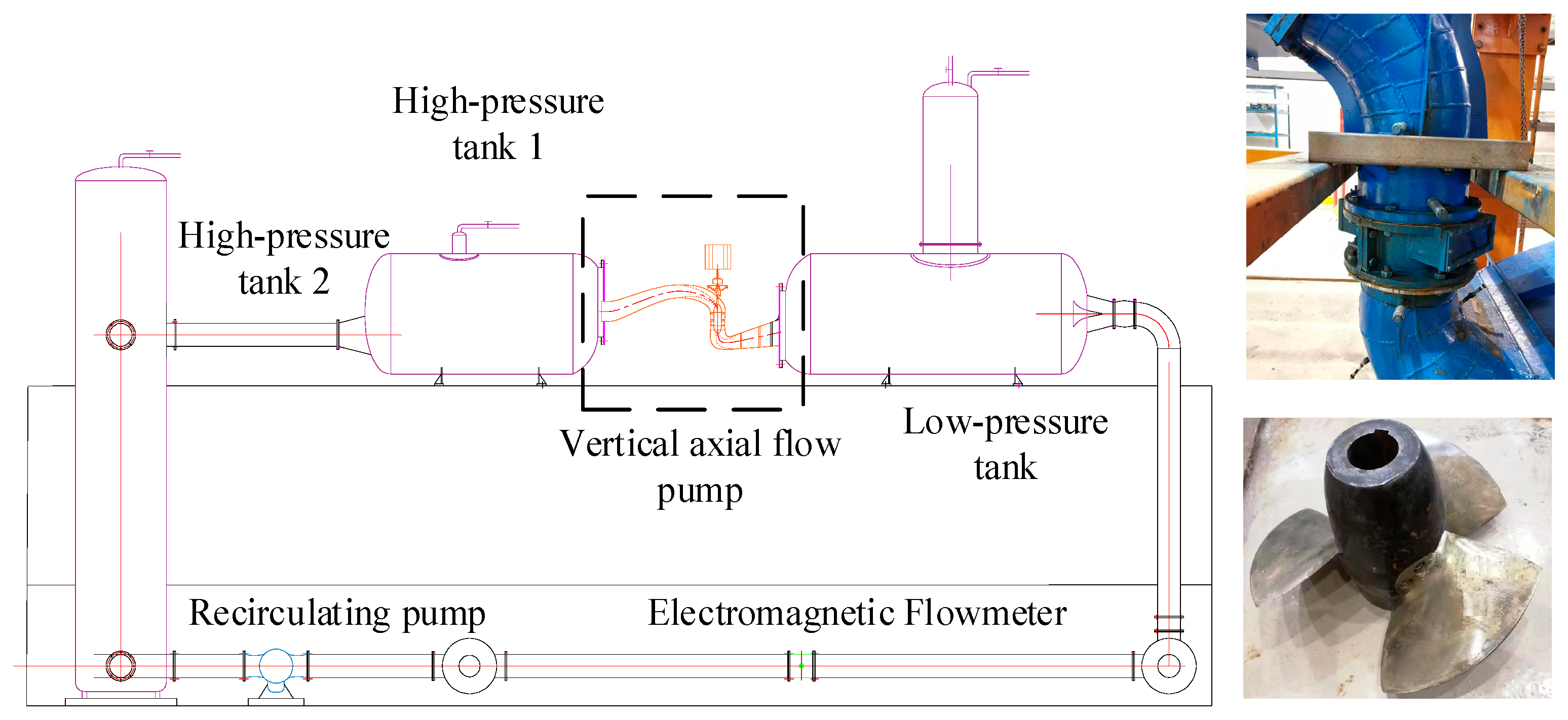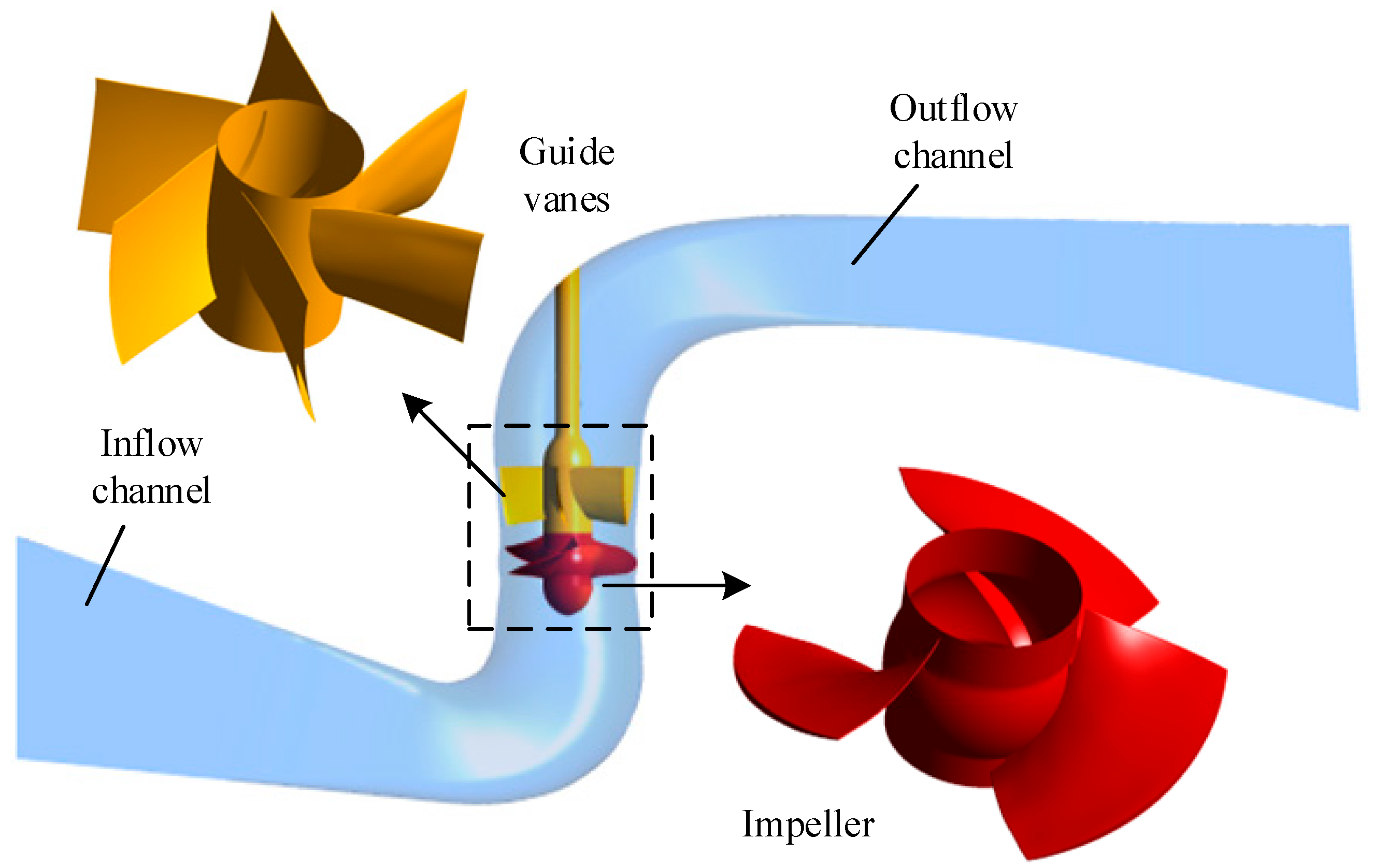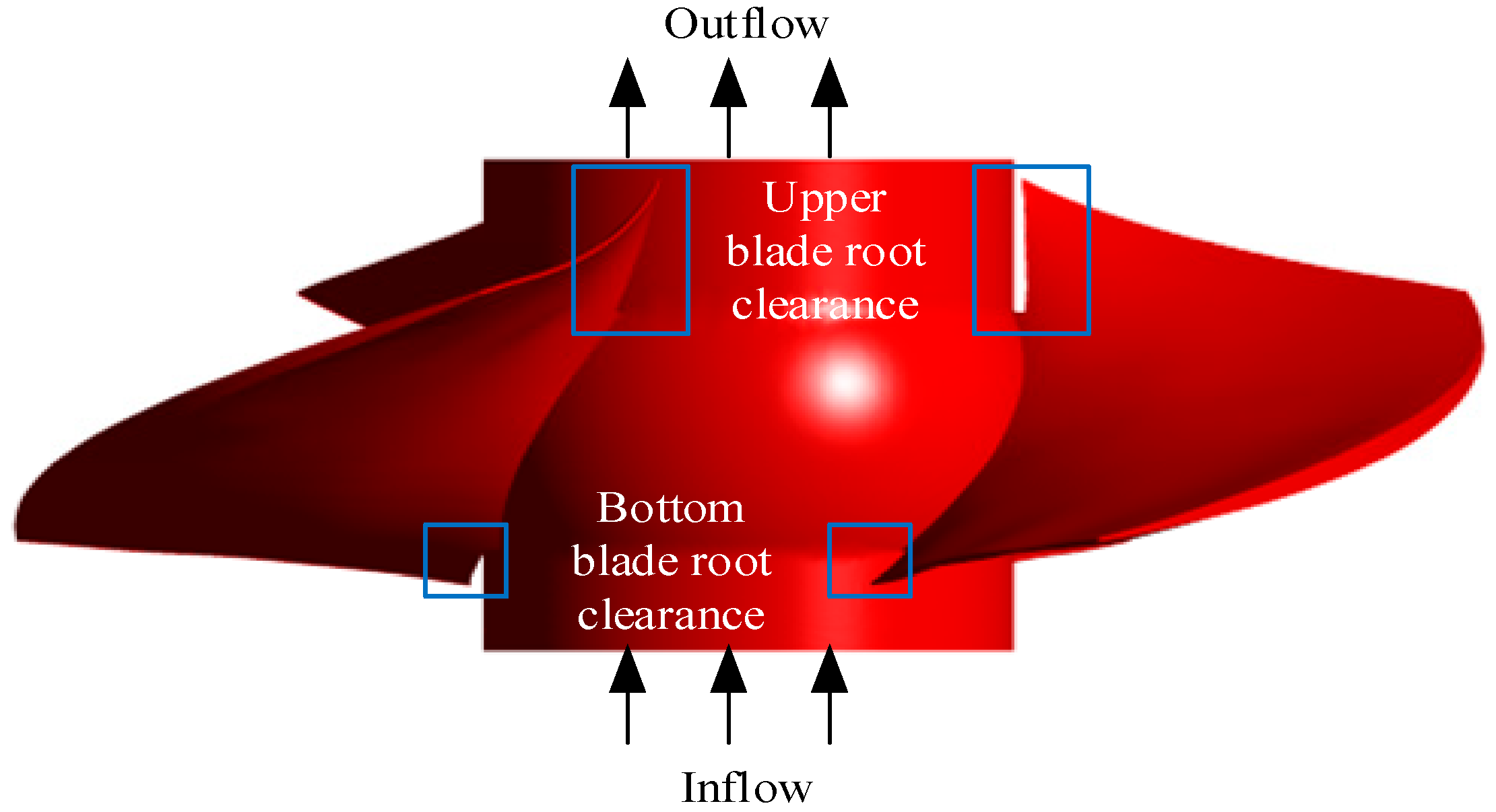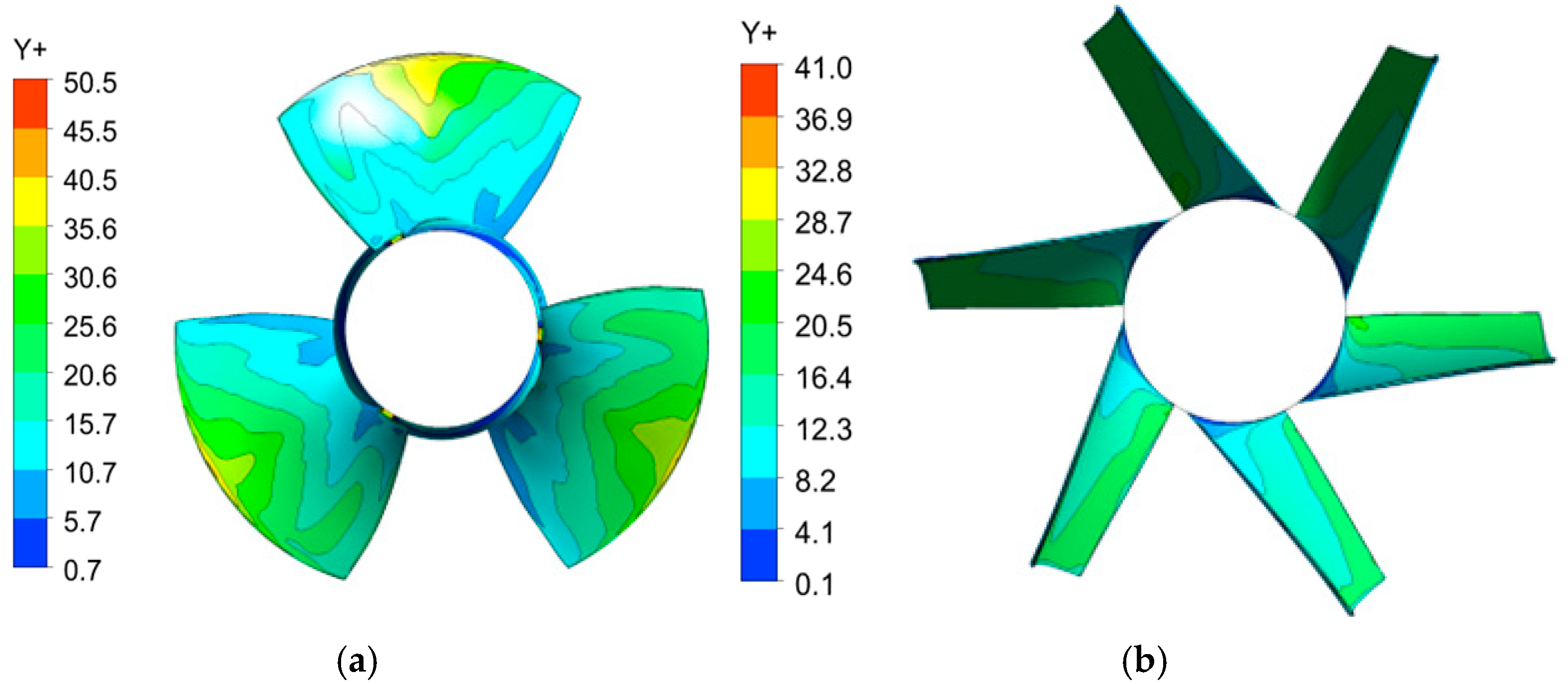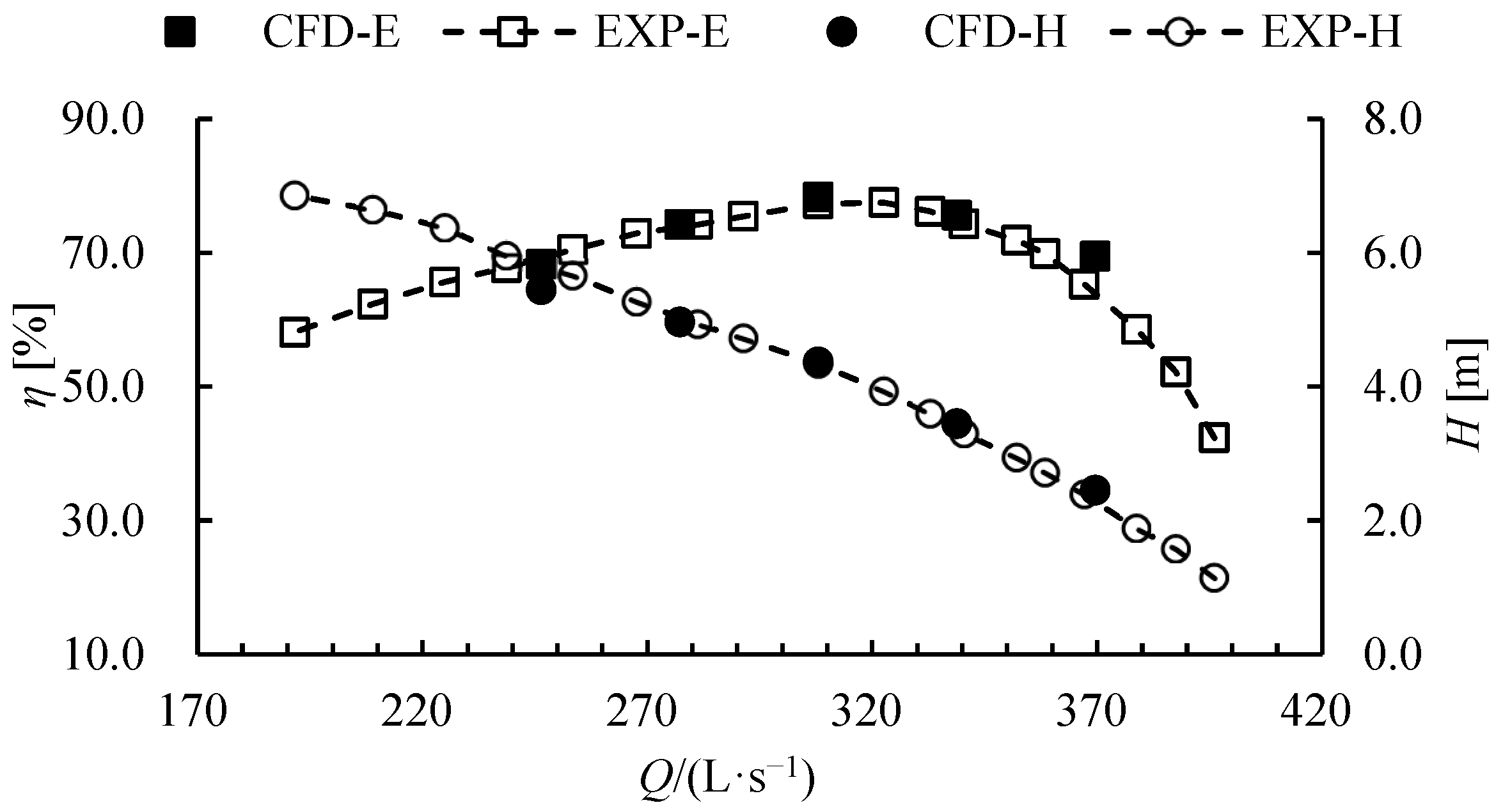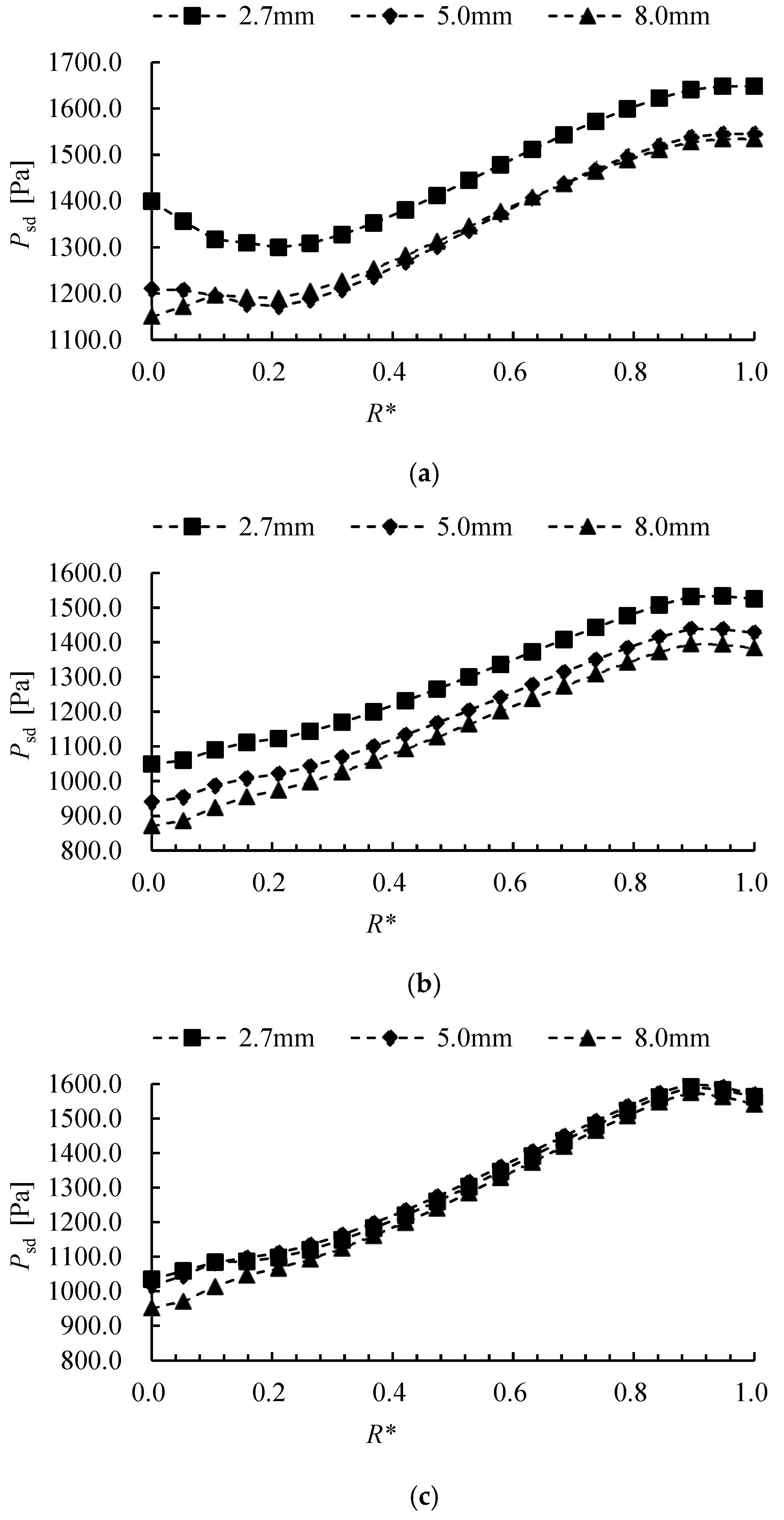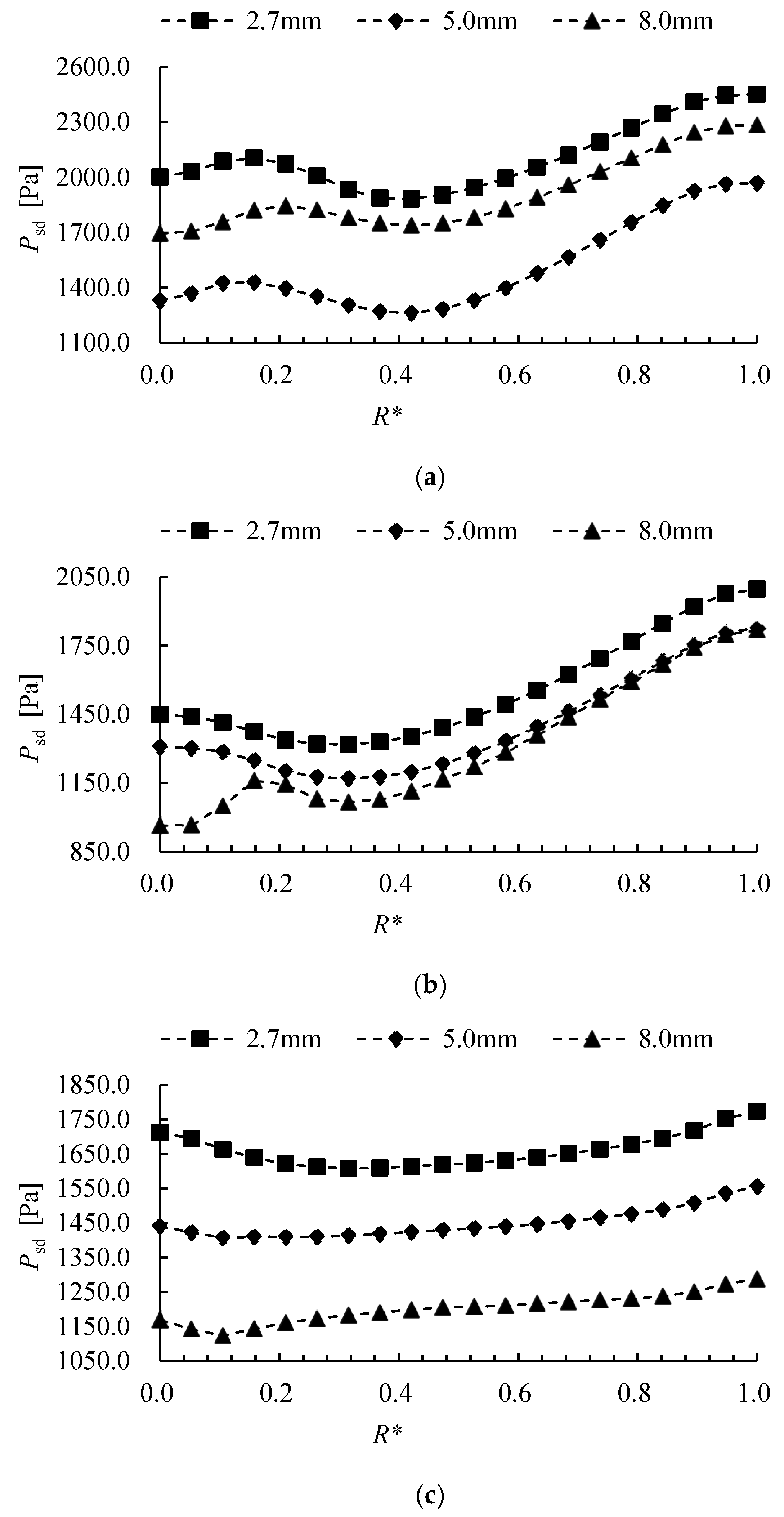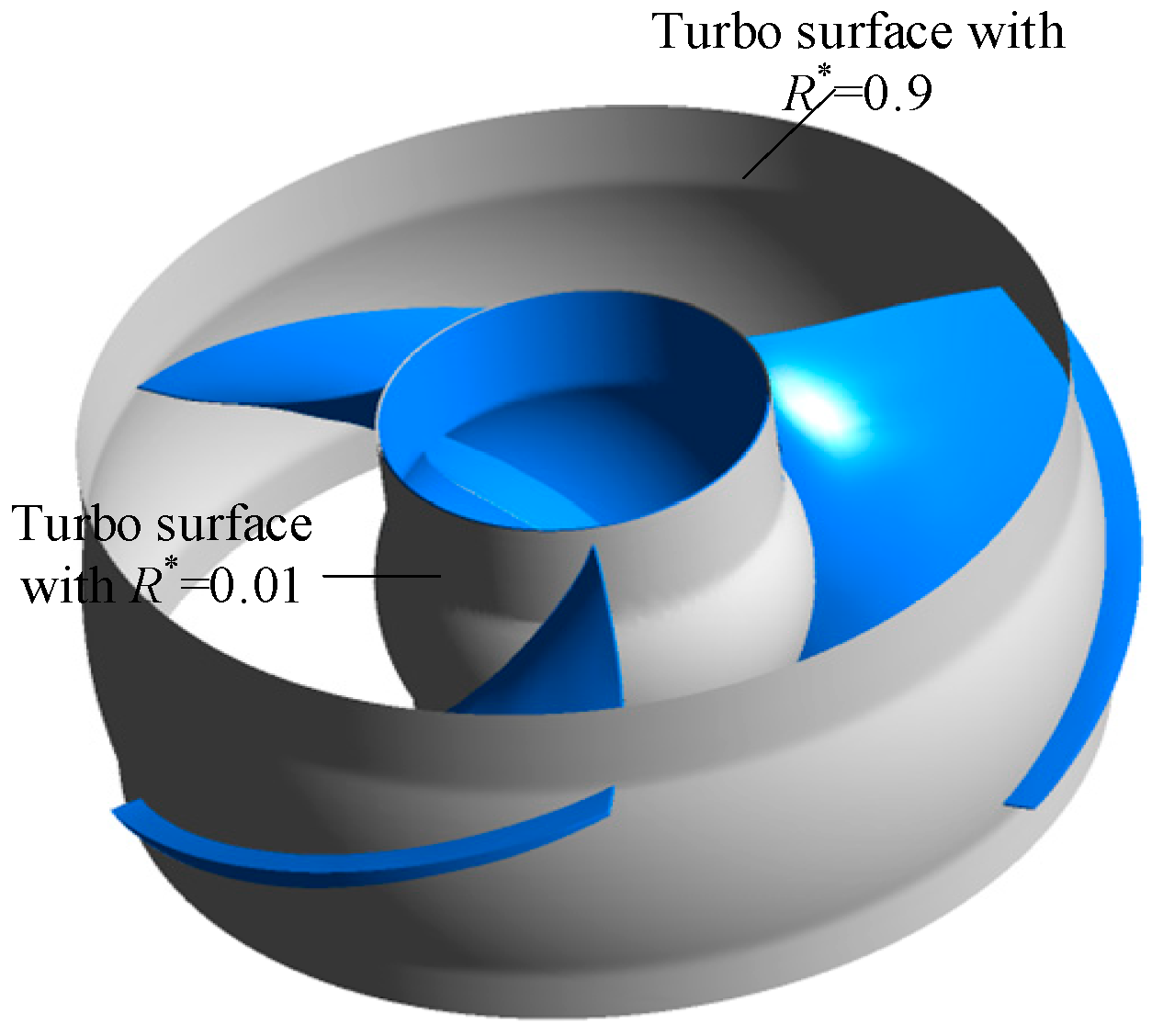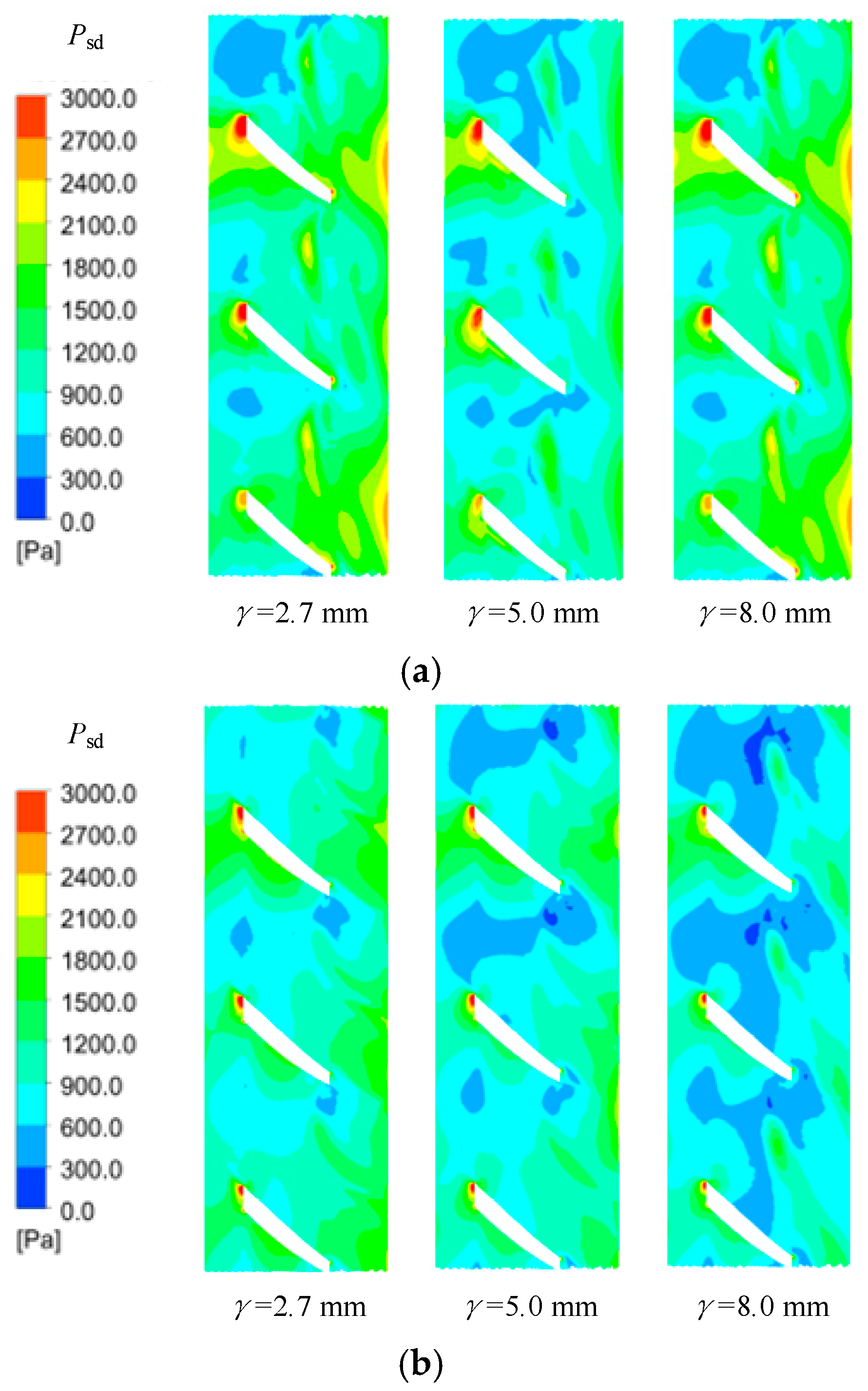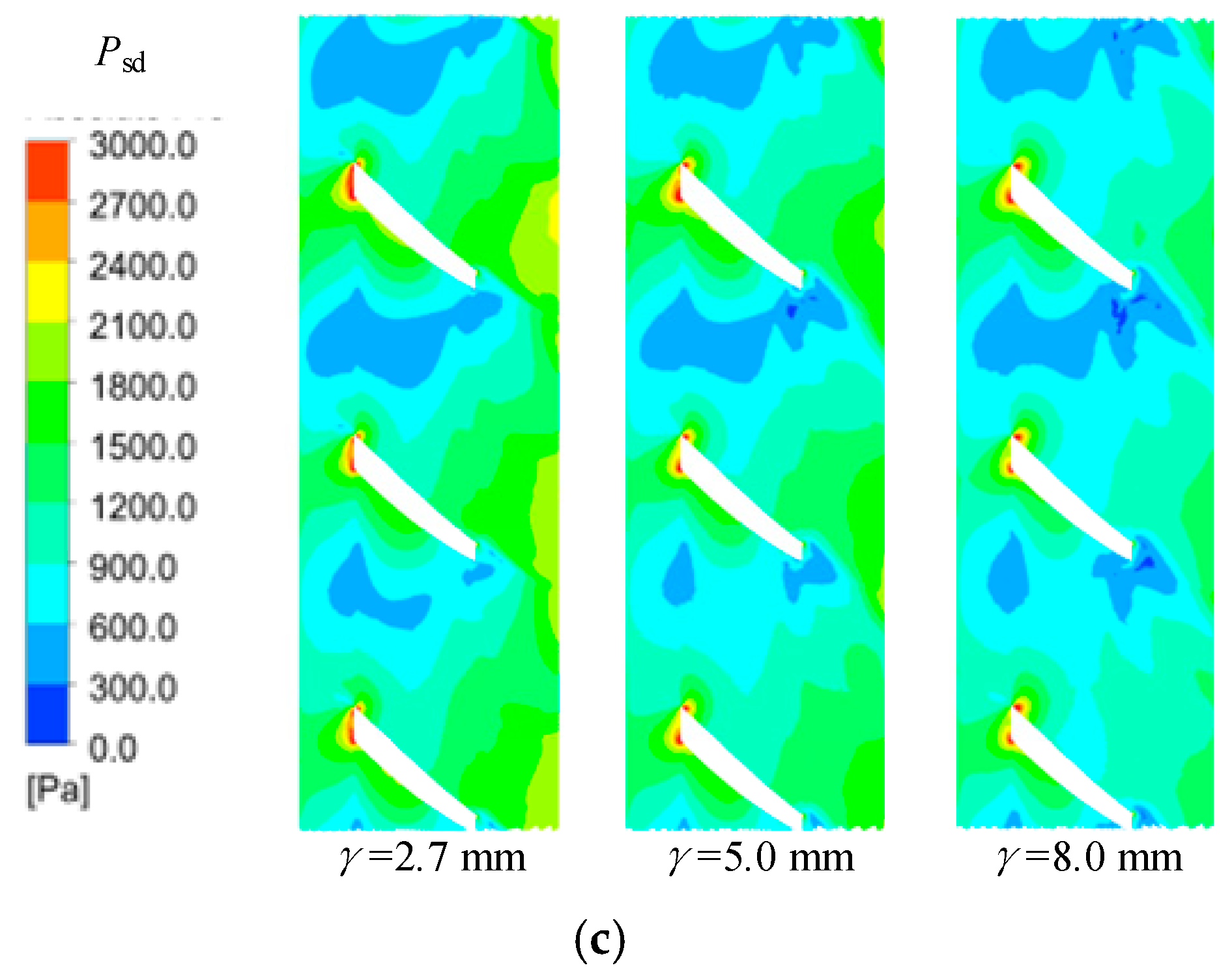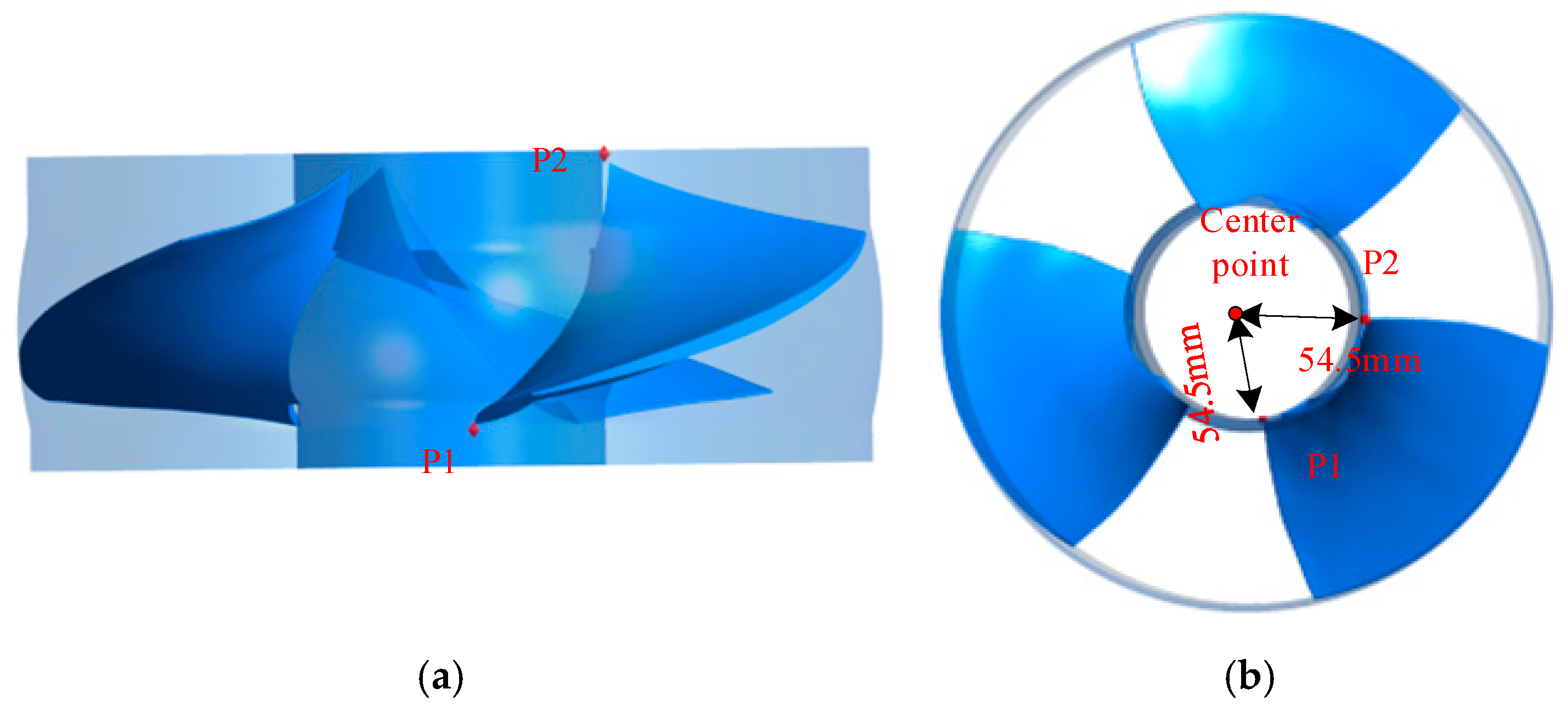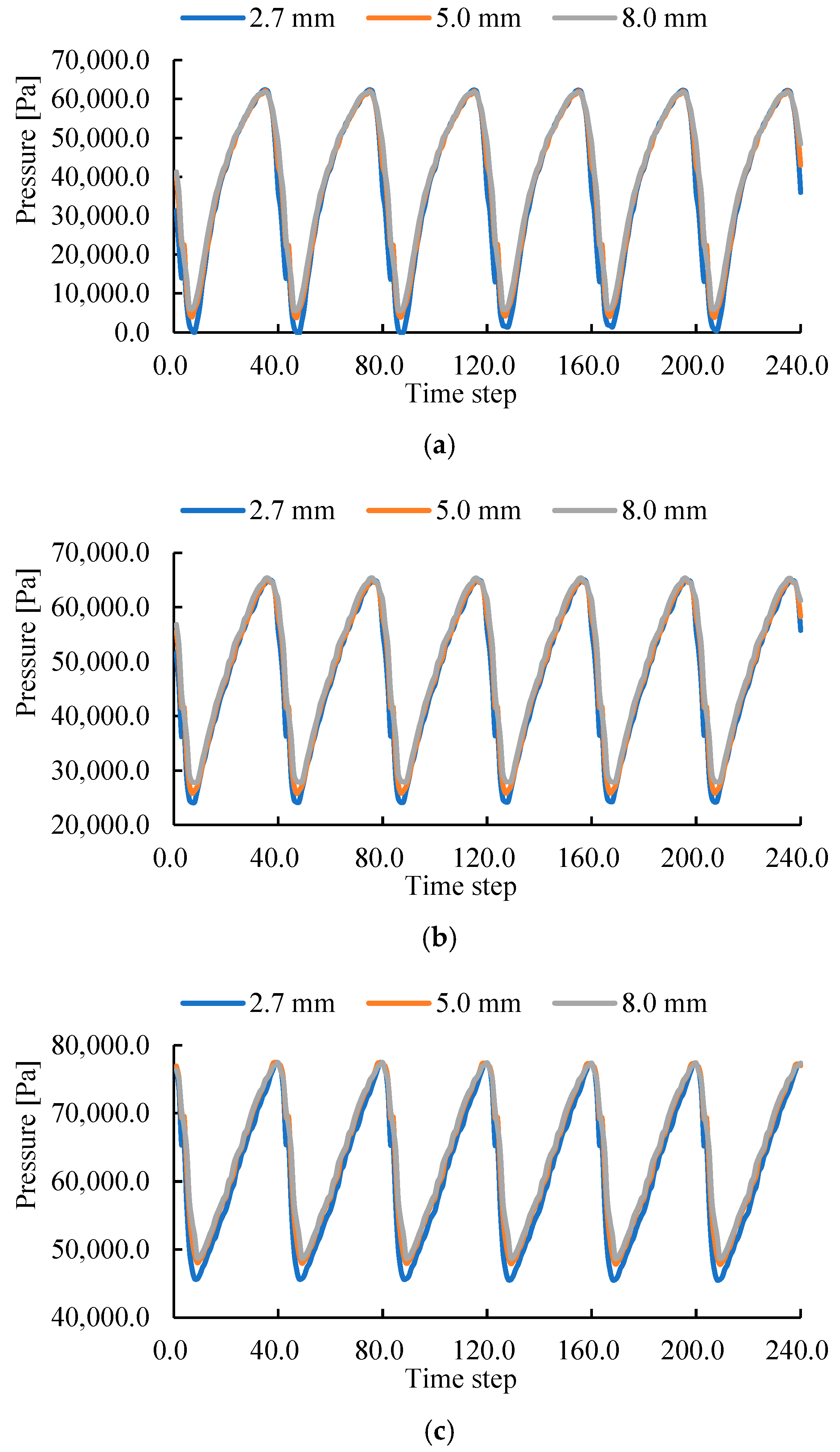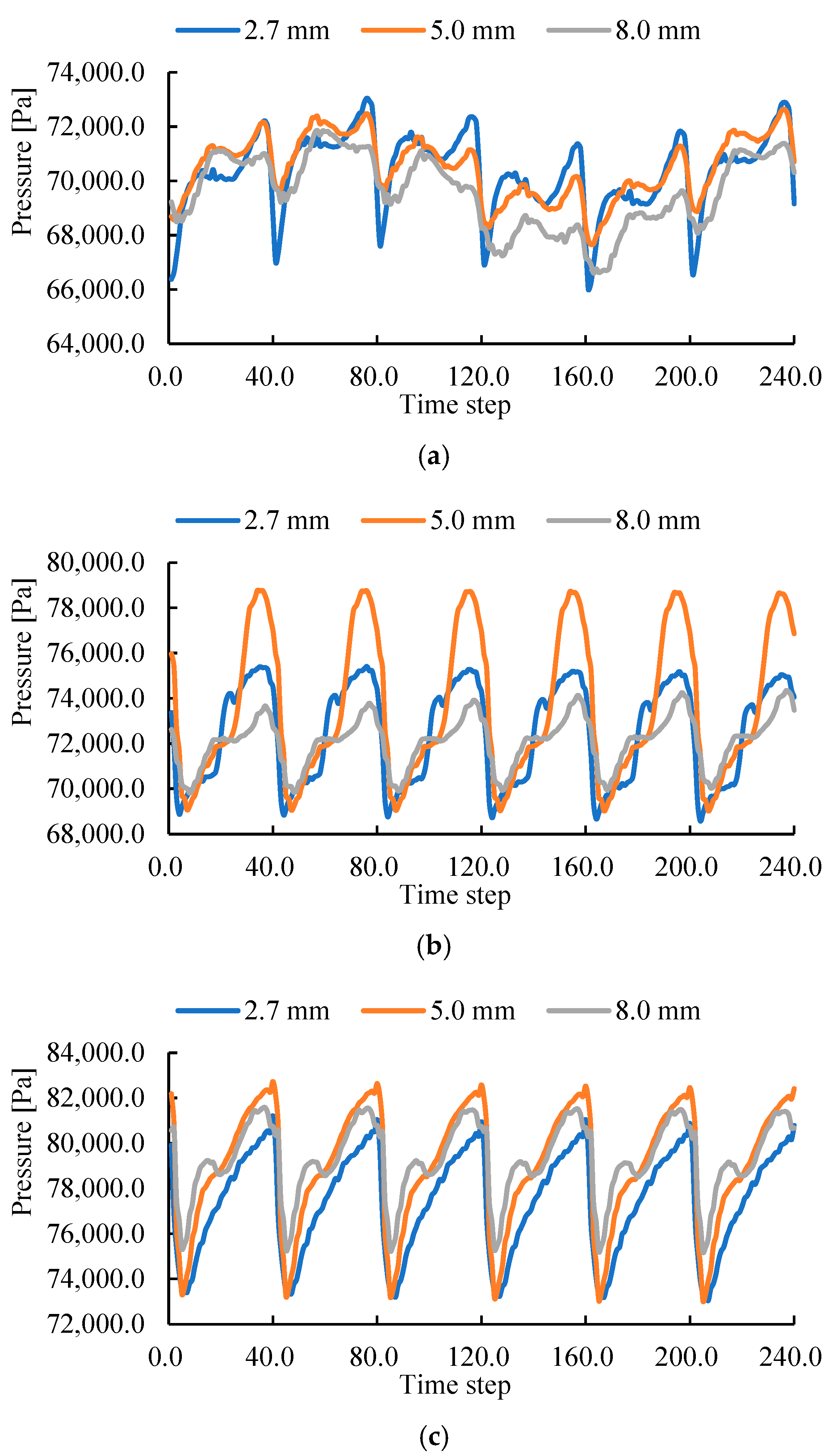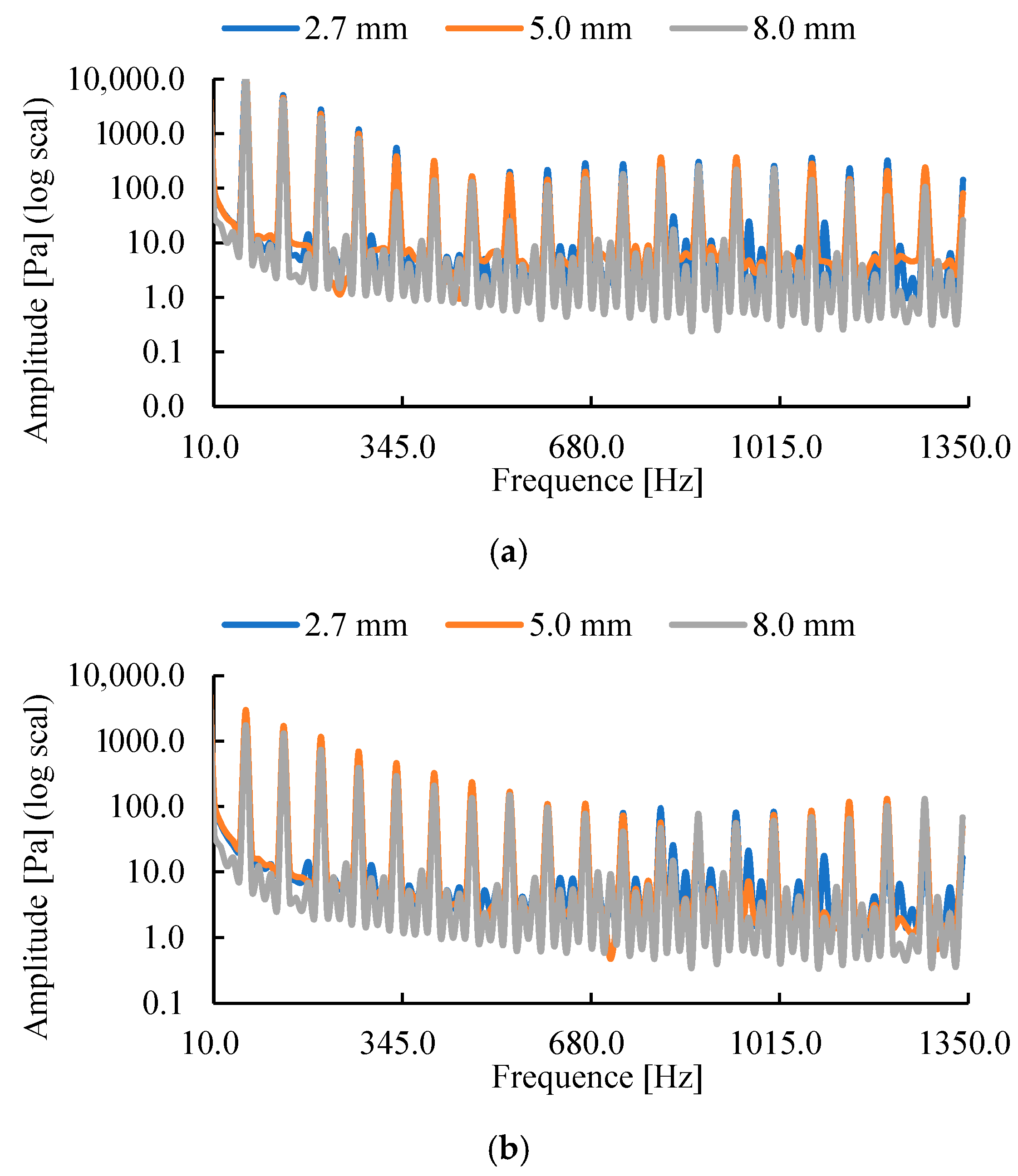1. Introduction
Vertical axial flow pumps are extensively employed in hydraulic engineering for critical applications such as agricultural irrigation, urban drainage, and hydropower generation, owing to their high fluid transport capacity, operational adaptability, and reliability [
1,
2]. These pumps play a pivotal role in supporting a wide range of engineering projects and socio-economic development. One of the key features of vertical axial flow pumps is the ability to adjust the impeller blade angle, which significantly enhances their operational efficiency range. However, this adjustment requires the presence of a blade root clearance between the blade root and the hub. By modifying the impeller blade angles, the pump can adapt to diverse working conditions and flow requirements, thereby improving overall efficiency and performance. Despite these advantages, the design of the blade root clearance is of paramount importance. Insufficient clearance limits the adjustment range, thereby reducing operational efficiency. On the other hand, excessive clearance can induce leakage flow near the hub, leading to flow field instability, water pressure fluctuations, and a decline in pump stability. Consequently, optimizing the root clearance is essential to mitigate water pressure pulsations caused by leakage flow, ensuring the reliable and widespread application of vertical axial flow pumps in hydraulic engineering.
The root clearance flow (RCF) [
3] and tip clearance flow (TCF) [
4] are collectively termed blade leakage flow, arising from the pressure differential between the blade pressure side and suction side. Although RCF and TCF occur at distinct locations—RCF near the impeller hub and TCF near the impeller rim—they share similar formation mechanisms. Given the limited research currently available on RCF, findings from TCF studies can inform its investigation. Recent advancements in computational fluid dynamics (CFD) technology [
5,
6] and experimental instrumentation [
7,
8] have enabled researchers to explore the impact of leakage flow on internal flow field structures and energy characteristics. In mixed-flow pumps, Li et al. [
9] numerically investigated the effect of blade tip clearance size on rotational stall characteristics. They found that while reducing the clearance size improves hydraulic efficiency, it also increases the flow rate at the critical stall point, implying a narrower stable operating range; the underlying reason is that smaller tip clearances intensify internal backflow and secondary flow within the impeller passage. Ji et al. [
10] proposed altering the impeller blade tip structure shape to achieve consistent stall condition formation. They predicted through numerical simulation that the bulge-tip structure and double-rib-tip structure can reduce the secondary flow intensity at the impeller outlet, thereby suppressing stall vortex formation and narrowing the stall operating range. Han et al. [
11] were the first to observe a double-hump-shaped blade tip clearance cavitation morphology, dividing its evolution into four stages: incepting, growing, merging, and propagating. Furthermore, they proposed that the trajectory of the leakage vortex formed during inception directly influences the tip leakage flow intensity. In axial flow pumps, Zhang et al. [
12] found through numerical simulation that under low cavitation number conditions, leakage flow in the blade tip gap alters the circumferential and radial velocity distribution of the nearby flow field, promoting secondary blade tip gap vortex formation. Wang et al. [
13] numerically determined that the cavitation length caused by TLV in a bidirectional axial flow pump with a large clearance (1 mm) was significantly longer than with a small clearance (0.5 mm); reverse shear cavitation (RSC) also occurred earlier. Lin et al. [
14] observed that pressure, vorticity, and turbulent kinetic energy in the low-pressure region at the tip clearance decrease with increasing flow rates, with TLV strength being higher at low flow rates but attenuating and becoming controlled by the main flow at higher rates. In contrast to the extensive research on TCF, studies on RCF remain limited. Although RCF shares a similar formation mechanism with TCF, its occurrence near the impeller hub may result in distinct flow characteristics and performance impacts, particularly on water pressure pulsation.
The key to studying water pressure pulsation in pumps lies in extracting the time–domain and frequency–domain characteristics of pressure signals [
15,
16]. Fast Fourier Transform (FFT) [
17] is commonly used to extract average frequency distributions over time intervals, while wavelet transform (WT) [
18] captures time-varying frequency features. Using FFT, Liu et al. [
19] analyzed pressure pulsation frequency–domain characteristics in a bidirectional axial flow pump under cavitation conditions. They found that during reverse operation, inflow distortion induced by anti-arch guide vanes and quasi-periodic vertical cavitation flow significantly amplified the main frequency amplitude near the blade tip clearance. Jiang et al. [
20] revealed that the main frequency of the impeller inlet flow field corresponds to blade passing frequency (BPF), with high-amplitude frequencies concentrated within 0–1.5 × BPF; decreasing flow rate or increasing rotational speed enhances turbulent energy dissipation, elevating amplitudes in this range. Employing WT, Lu et al. [
21] observed that during the transition from quasi-steady cavitation to initial unstable cavitation in a centrifugal pump, pressure pulsation at the impeller inlet initially increases, then decreases, while amplitudes at the outlet rise steadily. Combining numerical simulations of flow field structures further elucidates the origins of these time–frequency and frequency–domain characteristics [
22,
23]. For example, Shi et al. [
24] compared pressure pulsation at different radial positions in a full-flow pump impeller channel, finding that the main frequency amplitude—influenced by backflow clearance—gradually increases from hub to rim. Therefore, FFT and WT effectively extract pressure signal characteristics in pumps, establishing clear links between flow structures and pressure fluctuation behavior.
In this paper, four kinds of vertical axial flow pumps with three blade root clearances are taken as research objects. The internal flow field structure is predicted by solving the unsteady Reynolds-averaged Navier–Stokes (RANS) equations, and FFT are used to study the influence of leakage flow in the blade root clearance on water pressure pulsation characteristics. The research conclusions can provide a theoretical reference for the optimal design of vertical axial flow pumps.
3. Test Verification
Figure 6 presents a comparison between the external characteristic curves obtained from numerical simulations and experimental measurements for an axial flow pump with blade root clearance
δ = 2.7 mm. Hydraulic efficiency and head can be calculated according to the following formula:
where
and
are the outlet total pressure and relative inlet total pressure,
is density,
is acceleration due to gravity.
is mass flow rate,
is shaft power.
As shown in the figure, the external characteristic curves derived from both methods exhibit similar trends. For the efficiency curve, both the simulated and experimental efficiencies initially increase and then decrease with increasing flow rate, reaching their peak efficiency at a flow rate of 0.308 m3/s. Under this condition, the deviation between the simulated and experimental efficiencies is less than 1.4%. For the head curve, both the simulated and experimental heads decrease as the flow rate increases, with a deviation of no more than 0.8% under the design condition. These comparison results demonstrate that the boundary conditions used in the numerical simulations are reasonable and that the calculation results are reliable.
